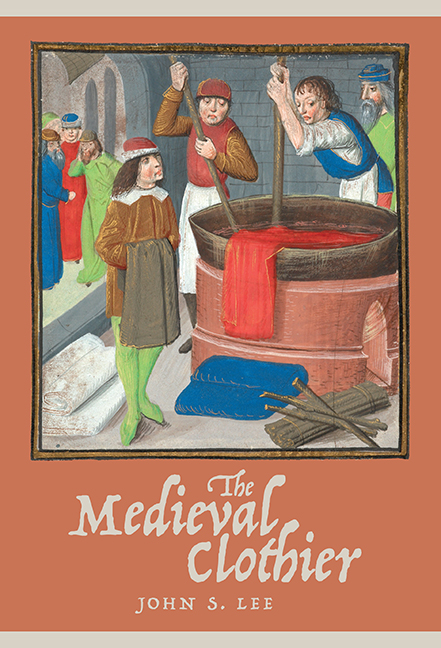Book contents
- Frontmatter
- Dedication
- Contents
- List of Illustrations
- List of Tables
- Acknowledgements
- Abbreviations
- A Note on Money, Weights and Measures, and Places
- Maps
- Introduction
- 1 Making Cloth
- 2 Marketing Cloth
- 3 Identifying Clothiers
- 4 Clothiers and Government
- 5 Clothiers in Society
- 6 Famous Clothiers
- Conclusion
- Appendices
- Gazetteer of Surviving Buildings
- Glossary
- Bibliography
- Index
- Frontmatter
- Dedication
- Contents
- List of Illustrations
- List of Tables
- Acknowledgements
- Abbreviations
- A Note on Money, Weights and Measures, and Places
- Maps
- Introduction
- 1 Making Cloth
- 2 Marketing Cloth
- 3 Identifying Clothiers
- 4 Clothiers and Government
- 5 Clothiers in Society
- 6 Famous Clothiers
- Conclusion
- Appendices
- Gazetteer of Surviving Buildings
- Glossary
- Bibliography
- Index
Summary
This chapter examines the roles of clothiers in wider society. Their family backgrounds, houses and workshops, and activities as farmers and landowners are explored, as are their religious beliefs and commemorative practices. Historians have frequently attempted to categorise groups within medieval society and identify defining characteristics. They have considered merchants who traded in goods separately from craftworkers and artisans who likewise produced goods and traded. Similarly, those earning a living from the land have been categorised differently from those earning a living from crafts and industry. Medieval houses are differentiated in terms of urban and rural locations, agricultural and mercantile functions, and peasant and middling-class ownership. A specific merchant approach to life and death, and a distinctive merchant culture have been identified. Clothiers, however, straddled all these boundaries. Any consideration of the role of clothiers within society, therefore, needs to range widely, viewing as broadly as possible the limited evidence at our disposal.
FAMILY BACKGROUNDS
The absence of detailed biographical information about many clothiers makes tracing their origins difficult. Michael Zell's detailed study of clothiers in the Weald of Kent around 1500 found that these clothiers tended to be the sons or nephews of clothiers, or the sons of relatively prosperous farmers, traders and artisans, whose families could afford the premium for apprenticeship and the capital needed to set up a cloth-making business. Inheriting a smallholding with a house and outbuildings to store materials and carry out some cloth-making tasks was also an advantage. The backgrounds of the leading clothiers of the later Middle Ages, who are among the best documented, suggest that many of these men came from families of farmers and artisans. Thomas Paycocke's father and grandfather were butchers, while Thomas Spring I may have been a sheep farmer; William Stumpe's father was a weaver and his brother a husbandman.
Gervase Amyot (d. 1537) of Benenden in Kent provides a good example of a clothier of more modest wealth from an agricultural background. His grandfather Stephen Amyot of Benenden was a small farmer who left his son Thomas, Gervase's father, a house and lands in 1489. Stephen also had sufficient wealth to leave in his will £1 for repairs to highways and 5 marks to employ a chantry priest for half a year.
- Type
- Chapter
- Information
- The Medieval Clothier , pp. 191 - 225Publisher: Boydell & BrewerPrint publication year: 2018



